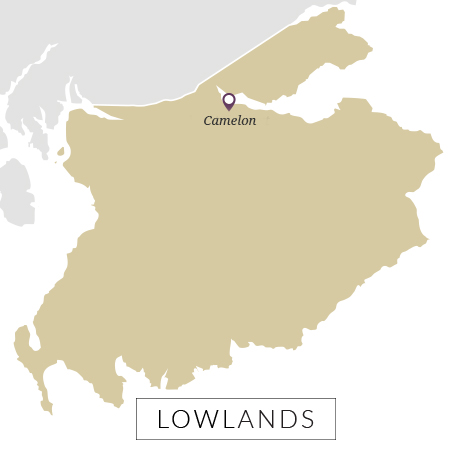Rosebank
This Lowland malt with its gentle, fruity palate, commands a dedicated following.


After closing the nearby Laurieston distillery, which suffered from water supply issues, the Stark brothers moved westwards to establish Camelon distillery in the Camelon district of Falkirk, beside the Forth and Clyde Canal.

Camelon seems to have produced near-continuously over its 36-year lifespan, although there may have been a silent period in the 1840s. It opened in 1826 under John Stark, who remained in charge there until his death in 1837. Gunn and Co., later just Thomas Gunn, ran the distillery until it finally closed in 1861.
The site then became the maltings for nearby Rosebank distillery and remained so until 1968. Rosebank itself closed in the early 1980s.
Camelon is today home to a Premier Inn and the Rosebank Beefeater restaurant. The long-moribund Forth and Clyde Canal has today been restored. The Kelpies and Falkirk Wheel are both in the area.


 Distillery & brand
Distillery & brand
This Lowland malt with its gentle, fruity palate, commands a dedicated following.


 Distillery
Distillery
One of 18 lost distilleries in the Falkirk area, Abbotshaugh had a brief existence.


 Distillery
Distillery
Also known as Damhead, this now lost distillery was active near Falkirk in the 1830s.